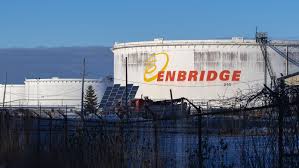Enbridge: A Backbone of Canada’s Energy Infrastructure

Introduction
Enbridge Inc. is a key player in the energy sector, recognized for its significant role in the transportation of crude oil and natural gas across North America. As one of Canada’s largest energy infrastructure companies, Enbridge is essential not just for the economy but also for the overall energy security of the nation. The company operates a vast network of pipelines and facilities that are crucial in delivering energy to various sectors, including residential heating, industrial use, and electricity generation.
Recent Developments and Projects
In recent months, Enbridge has made headlines with its ongoing projects and strategic developments. One notable initiative is the completion of the Line 3 Replacement project, which not only upgrades an aging pipeline infrastructure but also enhances safety and environmental protections. This project was completed in October 2021 and aims to provide a more reliable supply of crude oil, responding to increasing demand from refineries.
Additionally, Enbridge has been focusing on diversifying its energy portfolio. The company announced plans to invest significantly in renewable energy projects, including wind and solar farms. This move comes as part of their commitment to reducing greenhouse gas emissions and supporting Canada’s transition to a lower-carbon economy. Enbridge’s renewable energy ventures indicate a strategic shift towards sustainable practices in response to consumer demand and regulatory pressures.
Impact on Communities and Economy
Enbridge’s operations have substantial implications for both local communities and the broader economy. The company’s investments create thousands of jobs during construction and ongoing operations, contributing to local economies. However, they also face scrutiny and opposition from some community groups and Indigenous peoples who are concerned about environmental impacts and rights associated with pipeline constructions.
Engagement with Indigenous communities has become a focal point for Enbridge. The company is actively working to establish collaborations to ensure that their operations respect Indigenous rights and environmental commitments. This engagement is essential for building trust and facilitating support for future projects.
Conclusion
Enbridge plays an integral role in the energy landscape of Canada, balancing its foundational responsibilities in oil and gas infrastructure with an emerging focus on sustainability. As it continues to adapt to changing market dynamics and public sentiments, the company’s shift towards renewable energy could shape its future and the broader energy industry. For Canadians, understanding the evolution of Enbridge is essential as it may lead to both economic opportunities and challenges in energy dependence and environmental stewardship as the nation navigates its energy future.









